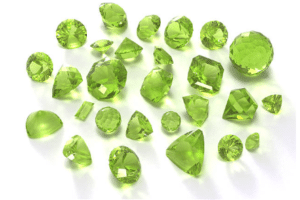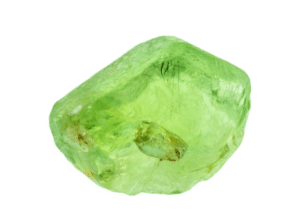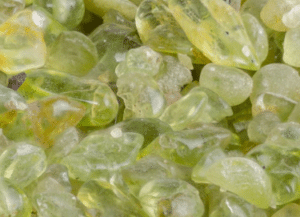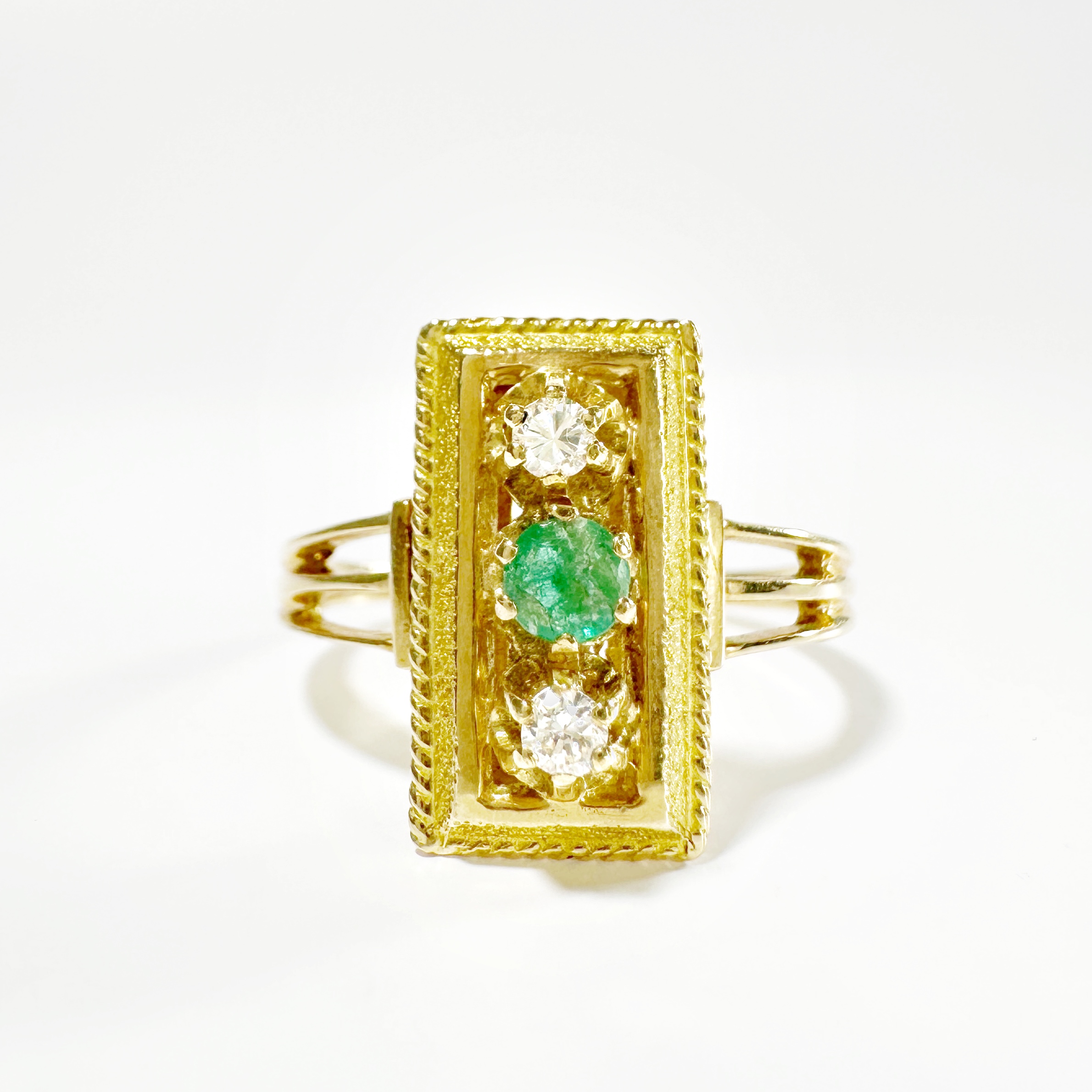Little known and yet remarkable for its golden lime green color, peridot is a gem with a rich and ancient history. Stone of the natives of the month of August, peridot reveals all its secrets in this article.
HISTORY OF PERIDOT

The first peridot crystals would have been exploited as early as the first millennium BC in the small island of Zabargad, located in the Red Sea near the peninsula of Ras Banas in Egypt. Discovered 3500 years ago, the Zabargad peridot deposit is the most famous and historically important, although it is no longer exploited today.
One of the proposed origins for the etymology of green stone is the Arabic word faridat (“precious stone, pearl”). According to Pliny the Elder, the stone “is… at the head of the white stones… and it has become, by privilege, synonymous with beauty… and especially deserves such a beautiful name; Because it brings together the transparency of crystal, the particular green of the air… No stone has more beautiful water; No one captivates the eyes more pleasantly and gently.”
MAJOR PERIDOT DEPOSITS IN THE WORLD
 The deposits producing the most beautiful gems come from various places around the world, including Myanmar, Pakistan, the United States (in Arizona), Egypt and China. Their exceptional attributes such as hardness, brilliance and their distinct golden-green color make them highly prized jewels in the world of jewelry.
The deposits producing the most beautiful gems come from various places around the world, including Myanmar, Pakistan, the United States (in Arizona), Egypt and China. Their exceptional attributes such as hardness, brilliance and their distinct golden-green color make them highly prized jewels in the world of jewelry.
The clearest and brightest peridots, sporting an exceptional hue, originate in a Himalayan region of Kashmir, where they are used to create beautiful peridot jewellery pieces. The harsh climate of this region restricts mining operations to the period from June to September. Currently, the San Carlos Apache Preserve in Arizona is responsible for 90% of peridot production. These precious gems can also be found in Australia, Brazil and China.
Interestingly, there are even peridots or olivines of extraterrestrial origin. Among the orbits of Mars and Jupiter is an asteroid belt. Sporadically, fragments of this belt fall to Earth in the form of meteorites. Known as shooting stars, they have captured the collective imagination for generations on clear summer nights. When these rare and precious meteorites, called “pallasites”, are cut out, a shiny metal surface of iron and nickel is revealed, adorned with numerous inclusions of olivine crystals. These celestial olivines are referred to as “palladots”. In addition, recent discoveries have indicated the presence of peridots on Mars.
COMPOSITION OF PERIDOT
 Peridot is a silicate that finds its place within the Olivines group. More specifically, it is classified within the species Forsterite within this group. With a hardness between 6.5 and 7 on the Mohs scale, it has a significant resistance.
Peridot is a silicate that finds its place within the Olivines group. More specifically, it is classified within the species Forsterite within this group. With a hardness between 6.5 and 7 on the Mohs scale, it has a significant resistance.
This peridot gem is characterized as an idiochromatic stone, which implies that it manifests itself exclusively in a single shade, green. This coloration is not generated by inclusions, but results from the chemical composition (iron, chromium, nickel).
As a result, the color palette of peridot ranges from yellow green, as bright and bright as young blades of grass bathed by the sun, to dark green evoking the forest depths. Smaller stones are often perfectly clear and pure, while larger specimens may harbor tiny inclusions that are usually invisible to the naked eye, testifying to their authenticity.
SYMBOLISM OF PERIDOT
 In ancient times, peridot was known as “chrysolite”. It was called “pitdah” in Hebrew and is mentioned several times in the Bible.
In ancient times, peridot was known as “chrysolite”. It was called “pitdah” in Hebrew and is mentioned several times in the Bible.
During the Crusades, peridot began to be introduced to Europe, where it was often used to embellish objects of sacred art, such as those in the Treasury of the Three Kings in Cologne Cathedral. Napoleon offered peridots to the Empress Josephine as a token of his love.
The Egyptians were already exploiting the healing properties of peridot, especially for the treatment of the liver. In the Middle Ages in Europe, it was attributed a variety of powers, claiming that it promoted the realization of dreams, attracted love and enhanced spirituality.
Peridot is the birthstone of individuals born in August. In Western astrology, it is mainly associated with the sign of Leo, and secondarily with Libra, Capricorn and Taurus. The related planets are Saturn and Venus. The peridot wedding corresponds to the 16th wedding anniversary.
 en
en
 Français
Français



